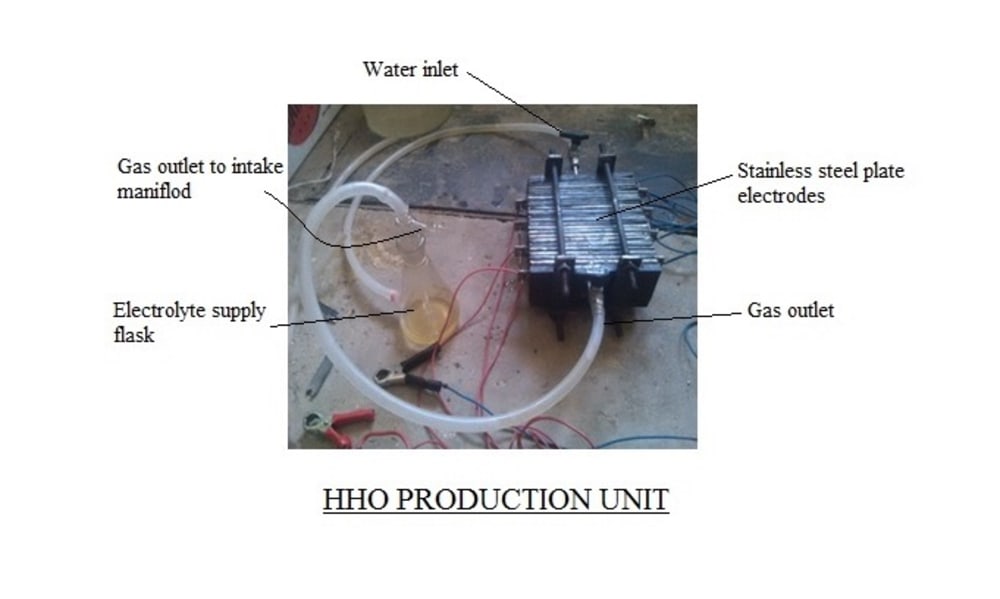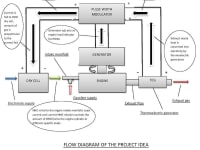Use of hydrogen as a fuel in internal combustion (IC) engines has been supported for years, precisely because of its high combustion efficiency and power output, besides the nontoxic emissions. However, the research and use of hydrogen in IC engines has always been hindered by the challenges associated with production and storage. To overcome these challenges, we have used HHO (hydroxy) gas, a stoichiometric mixture of hydrogen and oxygen, as a replacement to Hydrogen. HHO not only shows similar advantages but also eradicates the challenges faced as in case of pure Hydrogen. In the context of our HHO-Gasoline IC engine, the fuel for powering the engine is gasoline blended with HHO gas.
The HHO gas is produced on-board simply by the process of electrolysis, overcoming the challenge of costly storage of Hydrogen. Furthermore, the electric energy required for the production of HHO gas by electrolysis is obtained from the waste heat energy of the engine exhaust, by applying thermo-electric generators on the exhaust pipe. As, the waste exhaust energy is used to produce the HHO and this HHO is then mixed and burned with gasoline in engine cylinders; the waste heat energy of engine exhaust is carried to engine cylinders again by the HHO. This improves the thermal efficiency of engine which leads to decreased fuel consumption. Also, when Hydrogen carrying HHO burns with the gasoline in cylinders, the higher flame speed of Hydrogen results in a more complete combustion of gasoline which in turn reduces the amount of unburned hydrocarbon and partially oxidized carbon in engine exhaust, UHC and CO emissions respectively.
The engine used by us for the project is a generator set, single cylinder, model- OHV WY 168 FE-1 Gasoline engine with a displacement of 196cc and maximum power output of 5 hp@3000rpm. Burning a blend of 0.5% HHO, by engine intake volume, with Gasoline leads to decreased fuel consumption, reduced exhaust emission and enhanced engine power as compared to Gasoline only. To be precise, for engine operating at 1.568kW load and an operating factor of 0.1 (2.4 hours per day) over a year, savings of worth $43.39/year is evident for a fuel consumption of worth $705.65/year, i.e 6.15% cost reduction. These savings are after considering the per annum equipment cost and O&M (operation and maintenance) cost of the HHO system. The savings increase with increasing operating factor of the engine viz. savings of 7.26% and 7.63% at operating factor of 0.2 and 0.3 respectively. Also, a reduction of 31.11% in the CO emission and a reduction of 40% in the UHC emission is evident for engine operating at 1.568kW. The reduction in CO and UHC emissions goes up as much as by 75.12% and 66.67% respectively when engine operates at ideal condition.
Similar effects of HHO addition are expected on the other Gasoline engines as well as Diesel engines. It shows that HHO can be widely and effectively used commercially for its lucrative effects on the fuel consumption and engine performance.
Like this entry?
-
About the Entrant
- Name:Anshul Kumar
- Type of entry:teamTeam members:Shashwat Tripathi; J.S.S Academy of Technical Education, Noida, India
M.K Shukla; CSIR-Indian Institute of Petroleum, Dehradun, India - Patent status:none








